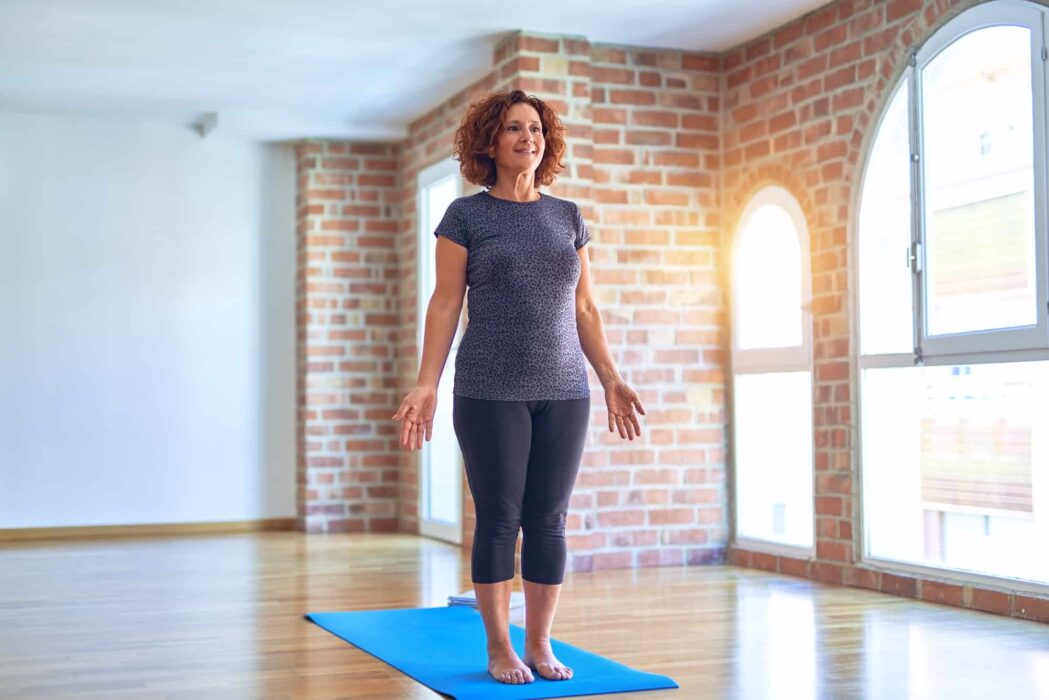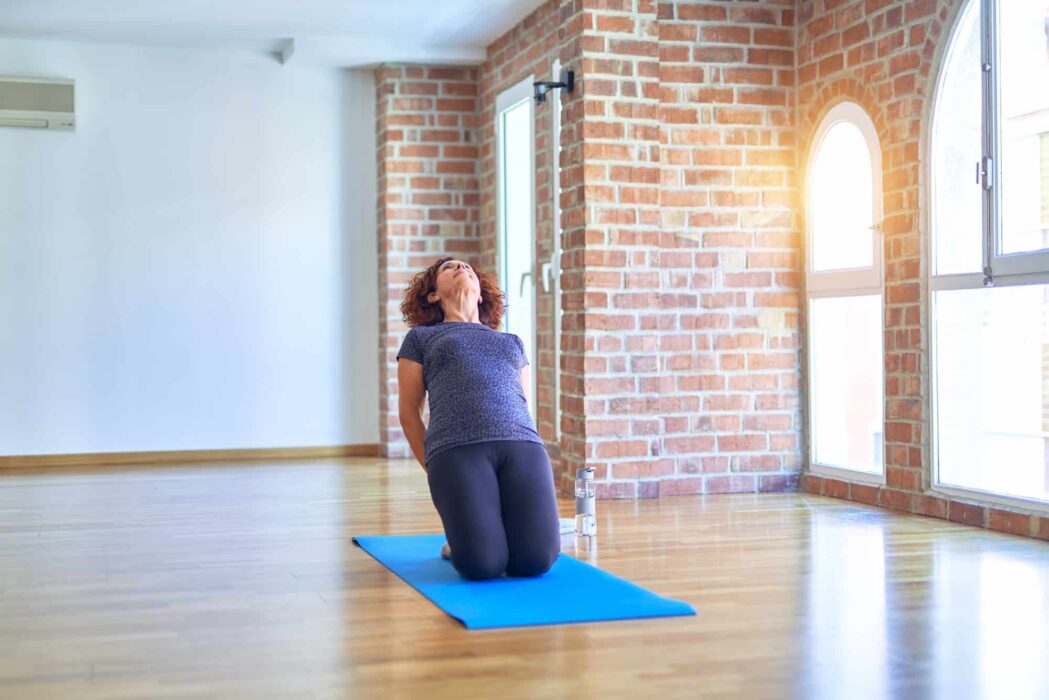It’s no secret that yoga practice adds to your longevity. And while the deep physical processes are hidden, most yogis look fresh, youthful, and twinkling with energy. But what should you do if you want to live longer but have little time to practice yoga?
Don’t worry; there is a way out – use Tibetan rites!
I assume what you think: oh, God do I need to go to Tibet? Should I become a monk? Not really; take a deep breath and calm down.
Tibetan rites series is a 20-minutes set of dynamic reps to boost vitality, relieve tension in the back and others muscles, feel healthy and live longer. These exercises were practiced by monks in Tibet around 2 500 years ago. Usually, the set includes the below 5 poses:
- Clockwise Spin
- Supine with Legs up
- Active Camel
- Dynamic Tabletop
- Upward-DownDog Transition
Also, there is a specific sixth Tibetan rite to increase your libido.
In the article today, we’ll explain how Tibetan rites work, their benefits and give you a quick instruction on how to practice them on your own.
What are Tibetan Rites?
This is a complex of five (in some cases six) yoga poses and transitions between them. Usually, each move should be repeated 21 times.
However, if you are a lazy one or have a pretty short time for training, feel free to start with only a few repetitions and then gradually increase the number of reps.
Do the Five Tibetan Rites Really Work to Live Longer?
Well, yes. Same as any physical activity, you can fit into your everyday life. Tibetan Rites are also called the Fountain of youth thanks to the physical, mental and spiritual perks they provide. We’ve included some for you below.
So, What Are the Benefits of the 5 Tibetan Rites?
- More strength and better balance;
- The prevention you from injury on and off the mat;
- Less concerned mind and thus lower anxiety, less stress, and improved sleep;
- Better circulation, metabolism, and enhanced digestion. It leads to weight loss, increased skin turgor, and overall perception of well-being;
- If you practice Tibetan rites in the morning, expect to experience a blast of energy;
- Many sustained practitioners report changes in the libido quality from the use of this set of yoga poses.
How Long Does It Take To Do the Five Tibetan Rites?
The whole sequence of Tibetan rites takes not more than 15-20 minutes. The duration of the entire session depends on the number of reps you choose to do in one go.
SUP Yoga Ultimate Guide with 5 Poses Breakdown
Traditionally, it would be best if you repeated the sequence seven times. But you can start with fewer reps and build up as your muscle get better tone.
Like with other yoga poses, the more regular you do it, the more effective it is. But try not to force the practice and stick to the non-violence yoga rule. Be mindful of your sensations and body signals. If there is a need, rest in between the reps.
How to Do Five Tibetan Rites?
When you are ready, here is a quick guide on how to start doing your Tibetan rites.
Spinning
This one is the first step to your Fountain of youth.

- Start in a standing position.
- Hands are reaching to the sides, palms facing down.
- Spin clockwise 12 times.
You can pick the pace comfortable for you. But remember to breathe deeply and tune in with your body and senses. Feeling dizzy – slow down or take a break. You can stay in a standing position with palms pressed together in the praying gesture and settle down.
Note: closing your eyes can increase the feeling of dizziness. So you may want to keep your eyes open as you spin.
Supine Legs Up
- Laying on the mat, start contracting the abdominals and raise your legs to the angle of 90°.
- As you raise your legs, lift the head off the mat. And then go back to the prone position. Repeat!
Note: Make sure your lower back is not overstraining.
If you’re new to workouts, ease the pose: go with bent knees or prop the glutes with your hands or a rolled towel.
Active Camel

- Kneel on the mat. If your knees are sensitive, use a folded blanket to towel under them.
- Get your lower back into a neutral position: tuck your tailbone, engage your legs by pressing shin more to the mat.
- As you inhale, slide your palms on the backside of your hips. Raise the face by slightly pushing the chin up. Gaze up.
- Then, as you exhale, move back to the upright position. Gaze forward.
Note: When you gaze up, pay attention to the neck position. To avoid squeezing the neck, pull your shoulder blades together and open the chest more.
Dynamic Tabletop
This pose requires more strength in the core and arms. And a bit of coordination as you transit from one position to another.
- Start in a seated staff pose. Press your palms firmly to the mat, feel some energy through the arms and shoulders. Engage the core and lift your buttocks off the mat a bit (no need to go too high, and that won’t be possible if you just started practicing Tibetan rites).
- Next, swing your pelvis between hands and push it up and forward to come in the reversed tabletop position.
- As you exhale, swing the hips back to the original position: you can put your buttocks on the mat or let them be off the mat. And repeat this transition minimum 3 times.
Upward-DownDog Transition

- Come into a regular Downward facing dog. Ensure the proper position of your palms and fingers ¬¬– fingers are wide; the index finger is pressed to the mat.
- Roll over the toes and engage your core and back muscles to get into the upward-facing dog as you inhale.
- Feel the strength through your arms and shoulders, don’t let your core sag between the hands. Instead, try to push the mat away from you.
Note: Connect the transition between two poses with your breath and go smoothly. Focus on the feeling and muscle activation as you move.
Here is the whole session:
Is It Safe to Do Tibetan Rites?
Tibetan rites are safe to practice but visit your doctor first if you doubt or have a specific health condition.
Practicing these yoga poses are not recommended when:
You’re pregnant. Bent positions and contraction of abdominal muscles are not safe to do when you have a baby on board.
You are prone to dizziness. The Spinning Tibetan rite can trigger more dizziness if you have certain health conditions and diseases (like vertigo, nausea, etc.). So, talk to your doctor before you do it or practice with caution.
Your balancing skills are challenged. Some brain diseases and neurological disorders make it difficult to hold coordinate moves and hold your balance. So, bypass this yoga practice if you have such.
Having said all the above, Tibetan rites are a practice to make you more active in an everyday life even if you’re a busy person. If you manage to fit this sequence into your workout routine in a form of pre-warm, within 2-4 weeks you’ll see the change in your mood and the overall feeling of wellbeing.
Have a nice and safe practice!